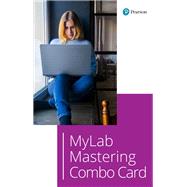For courses in Liberal Arts Mathematics.
This ISBN is for the 18-week MyLab Combo Access card. Pearson eText is included.
Relevant, user-friendly math for today’s liberal arts students
In an increasingly complex world where both information and misinformation are growing rapidly, it’s important that students learn to think critically and become comfortable with the numerical information all around them. The high-interest applications, emphasis on problem solving, and clear writing style of Mathematics All Around has earned praise from both instructors and students, making it one of the most popular liberal arts mathematics texts available. And when used in conjunction with MyLab® Math, it can be used very effectively for online courses.
With new co-author Margaret Moore, the 7th Edition builds on this success—showing instructors and students how they can use various apps, spreadsheets, and other technologies in their problem solving, incorporating GeoGebra and Excel Spreadsheets in some examples, and more. Mathematics All Around also is particularly well-suited for students who need to satisfy a one- or two-course requirement in math in order to transfer or graduate.
Personalize learning with MyLab Math with Pearson eText
This flexible digital platform combines unrivaled content, online assessments, and customizable features to personalize learning and improve results.
Pearson eText is an easy-to-use digital textbook available within MyLab that lets you read, highlight, and take notes all in one place.
NOTE: This MyLab Combo Access pack includes a MyLab access code plus a loose-leaf print version (delivered by mail) to complement your MyLab experience. In addition to this access code, you will need a course invite link, provided by your instructor, to register for and use MyLab.











